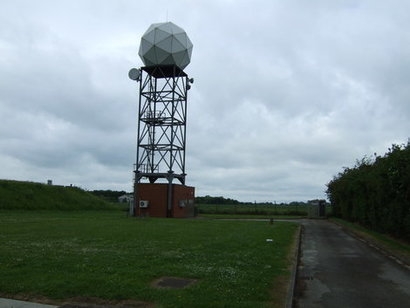
Major wind energy firms are rapidly expanding their use of remote sensing across their project portfolios, ending a three-decade reliance on meteorological (met) towers. A new report from Vaisala finds that, in order to stay competitive, wind developers and operators must invest in redefining their measurement practices or risk falling behind the pack. Developers and operators that consolidate their use of the technology will realise the commercial benefits of cutting assessment times, reducing development costs, improving asset performance and unlocking a greater understanding of the wind resource.
The report, Remote Sensing Revolution: Why remote sensing will become the new standard for wind development, financing and operations, links Vaisala’s own market analysis with perspectives from leading wind energy developers, operators, financiers and consultants. It illustrates how independent R&D and validation undertaken in the field is setting the pace for industry adoption of mobile remote sensing units. These researcher- and engineer- led initiatives have highlighted the financial benefits of a switch to remote sensing, and forced financial and technical institutions to reconsider the universe of data they accept for funding.
“The market is reaching a tipping point” said Pascal Storck, Director of Renewable Energy at Vaisala. “While published international standards for wind measurement may still lag behind the reality of what is being undertaken on the ground by developers and operators globally, conversations with our contributors make it clear that those who fail to take advantage of state-of-the-art remote sensing technology and expertise will soon find themselves at a significant disadvantage.”
The core advantages of portable ground-based SoDAR (Sonic Detection and Ranging) and LiDAR (Light Detection and Ranging) devices are now well-understood. Contributors to Remote Sensing Revolution cite their versatility, mobility and ability to be quickly deployed - and redeployed - in remote and difficult-to-access locations without the need of a permit. In addition, remote sensing devices are able to accurately collect wind data at heights beyond the tallest modern turbine hubs - providing developers with a more accurate and comprehensive understanding of site conditions.
By contrast, many developers cite persistent challenges involved in their use of traditional met towers - relating to data extrapolation, permitting, construction and safety.
“We find that the wind power industry is struggling with the lack of versatility afforded by met towers” Storck added. “Not only are hub height met towers expensive to procure, they are expensive to install and maintain. However, the real revolution is not just related to savings in cost when compared to a met tower, it is the realisation that a remote sensing device provides a different and much richer data set. Not only is remote sensing often cheaper than hub-height met towers in developed markets, it is ultimately simply better and improving constantly”.
Despite an increasingly strong evidence base for the data accuracy and commercial benefits of remote sensing, an absence of formal standards for its use as part of sensitive financial and operational decisions has created hesitancy in some areas of the industry. The recently updated IEC 61400-1: 2017 ed. 2 standard outlines for the first time an accepted validation protocol for the use of remote sensing devices in power performance testing, but no such protocol currently exists for wind resource assessment, leading to confusion about the use of remote sensing data in project finance.
However, with a growing proportion of project developers and operators in both established and emerging wind markets already using the technology, Remote Sensing Revolution asserts that the groundwork for widespread adoption is already in place. The majority of contributors to the report foresee a market in which remote sensing will replace met towers for all measurement purposes, from site prospecting and site assessment, to wind monitoring and project optimisation.
“Where the industry leads, standards and financial acceptance will inevitably follow” said Storck. “As our contributors attest, the revolution is already well underway. Our message to those who are still reliant on met towers is to think now about how they can reshape their measurement practices.”
Remote Sensing Revolution features perspectives and contributions from leading firms in the wind energy sector, including Actis, DNV GL, Nordex Acciona Windpower, Apex Clean Energy, Eurus Energy, UPC Renewables, Valorem, Innergex and GCube Insurance.
Image: A Met Office weather data tower
For additional information:

